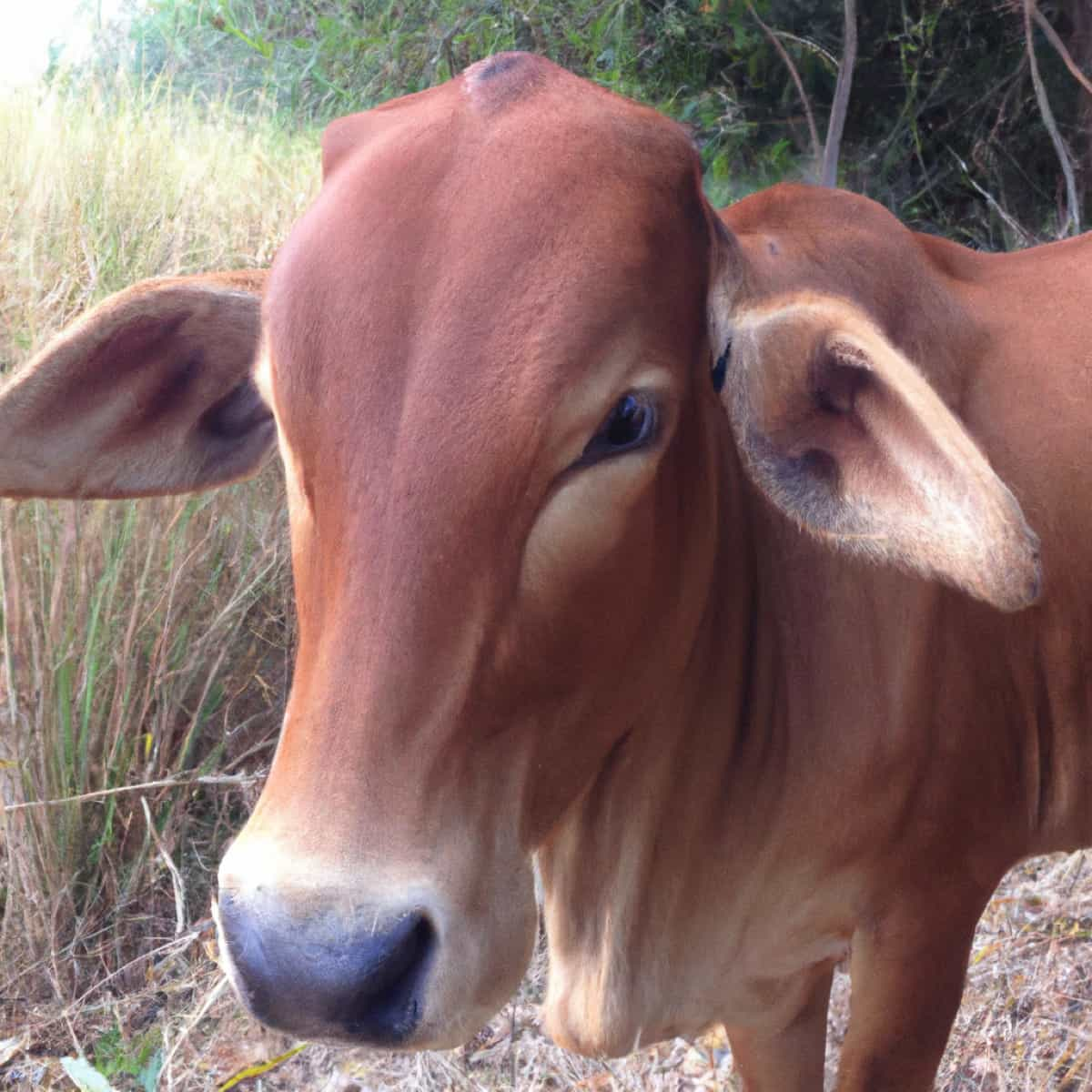Gir cow farming has become an increasingly popular business opportunity due to the rising demand for organic and natural dairy products. Gir cows are native to India and are known for their high milk yield, excellent disease resistance, and adaptability to different climates. Starting a Gir cow farm requires careful planning, investment, and management to ensure the success and profitability of the business.

What are the Characteristics of Gir Cows?
Gir cow is a popular dairy breed native to India. It is named after the Gir forest region in Gujarat, India, where it originated. Gir cows are known for their high milk yield, adaptability to various climatic conditions, and excellent disease resistance. They are among the most sought-after breeds for dairy farming, especially in India, due to their high-quality milk production and versatility.
The Gir cow is medium to large-sized with a light to dark red coat and a short, glossy coat. They have a broad foreheads with small ears that curve inward. The cows have a well-developed udder with well-spaced teats, allowing for efficient milking. Gir cows are docile and easy to manage, making them a popular choice for small-scale farmers and large-scale dairy operations alike.
One of the most significant advantages of Gir cows is their high milk yield, ranging from 1500-4000 liters per lactation period. The milk has a high butterfat content, making it suitable for producing a wide range of dairy products such as cheese, butter, and ghee. Gir cows are also known for their excellent fertility rates and calving ease. They are resistant to many common diseases and have a long lifespan, making them a valuable investment for dairy farmers. Gir cows are an excellent choice for anyone starting a profitable and sustainable dairy farming business.
How to Start Dairy Buffalo Farming in 10 Steps
Research and Planning
Start by researching the different aspects of Gir cow farming, such as breed characteristics, feeding requirements, breeding methods, and management practices. You should also consider the market demand for Gir cow milk and other products. Once you have gathered enough information, develop a detailed business plan that outlines your goals, financial projections, and operational strategies.
In case you missed it: How to Start Dairy Cow Farming in 10 Steps: Business Plan, Management, and Care

Selecting the Right Location
Choose a location that is suitable for Gir cow farming. The ideal location should have a moderate climate, access to clean water, and sufficient grazing land. As an additional precaution, be sure that floods and droughts are not common in the region.
Building Infrastructure
Construct a barn or shelter for the Gir cows to protect them from extreme weather conditions. Install water troughs and feeders to ensure the cows can access clean water and food. You should also build a milking parlor and storage facilities for milk and other dairy products.
Acquiring Gir Cows
Purchase high-quality Gir cows from a reputable breeder. You should ensure the cows are healthy, disease-free, and have good genetics. Ensuring that the cows are regularly vaccinated and treated for parasites is also essential.
Hiring Staff
Hire knowledgeable and experienced staff to help you with the farm’s day-to-day operations. You may need a veterinarian, a dairy manager, and other skilled workers to ensure that the cows are well-cared for and that the farm runs smoothly.
Feeding and Nutrition
Provide a well-balanced and nutritious diet to the Gir cows to ensure optimal health and milk production. Consult with a nutritionist to develop a feeding plan that meets the cows’ nutritional requirements.
In case you missed it: SBI Cattle Insurance in India: How to Apply, Policy Premium Cost for Cows, and Buffalo

Breeding and Reproduction
Develop a breeding plan that ensures the genetic diversity of your herd. Consider using artificial insemination or natural mating to breed the cows. You should also have a system for identifying and culling unproductive or sick animals.
Health Management
Develop a health management plan that includes regular check-ups, vaccinations, and treatment for common diseases. It is also crucial to have a quarantine area for new animals and sick cows to prevent the spread of diseases.
Milk Production and Processing
Set up a system for milking the cows, storing the milk, and processing it into various dairy products. Consider investing in milk processing equipment to add value to your products and increase your profits.
Marketing and Sales
Develop a marketing strategy that targets potential customers for your Gir cow milk and other dairy products. You can sell directly to consumers or work with local retailers and distributors to sell your products. You should also consider attending trade shows and other industry events to promote your products and network with other farmers.
Conclusion
Proper planning, management, and care can lead to high milk yield, healthy cows, and a profitable business. By following the ten steps outlined in this article, you can start your journey towards establishing a successful Gir cow farm.
- Feed Your Flock for Less: Top 10 Tips to Save on Chicken Feed
- Ultimate Guide to Ossabaw Island Hog: Breeding, Raising, Diet, and Care
- Hatching Answers: The Top 10 Reasons Your Chickens Aren’t Laying Eggs
- Eggs and Economics: Breaking Down the Cost of Raising Backyard Chickens
- Defend Your Greens: Proven Methods to Keep Iguanas Out of Your Garden
- Ultimate Guide to Cinnamon Queen Chicken: A Comprehensive Guide for Beginners
- Ultimate Guide to California Tan Chicken: Breeding, Raising, Diet, Egg-Production and Care
- Ultimate Guide to Marsh Daisy Chicken: Breeding, Raising, Diet, and Care
- 10 Types of Chicken Farming Businesses You Can Start for Profits